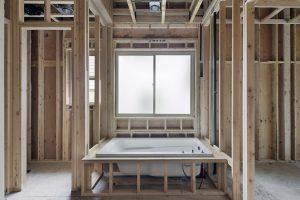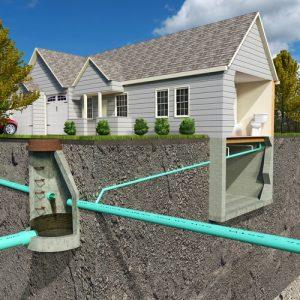Are you planning to build a new home? Congratulations! Whether it’s intended as your dream home or an investment property, you’re assuming a great responsibility – especially if you’re going to act as your own general contractor. That means you hire all of the subcontractors involved in the construction trades, coordinate when construction phases begin and oversee progress, among many other activities. Of course, this will also include perhaps the most important system in the house: the plumbing. By this time, we assume (and hope) you’ve deeply researched what’s involved with being your own general contractor and are confident you’re up for the task. We offer the following so you can ask knowledgeable questions of the plumbing contractors you contact for quotes.
Good to know: Even if your home is being constructed by a production builder, having basic knowledge about a residential plumbing system is still a plus. Not to sound cynical, but being able to talk intelligently about it to your home’s production manager may keep the crew on notice to prevent shoddy workmanship.
Now, on to the fun stuff!
The fine people at SFGate provide the basic layout and steps of a new plumbing installation. While this is very general (there’s mention of a frost line, which definitely doesn’t apply to Central Florida), it’s still helpful.
First, there are three main components in residential plumbing: the water supply system, the drainage system and the appliance/fixture installation. Standard plumbing procedures are governed by the local codes, but it is your home’s layout that determines fixture placement, the pipe routing diagram and the size of the pipes.
To start the plumbing system installation, the sewer accommodation stubs are set before the concrete foundation is poured. The basic laying of lines without making the final connections – which is referred to as the rough-in plumbing phase – occurs when the framing is complete, but before the hanging of the drywall. All the main drains are installed and connected to the stack. At this stage, rough-in drain fittings for bathtubs and sinks are also installed, along with the water supply pipes and toilet flanges.

Next, large plumbing fixtures – such as bathtubs and showers – are installed. It is difficult to set these fixtures after the doorways and walls are framed, so they’re set before this step. Sinks and commodes are set after the walls and flooring are complete.
Then comes the main water supply line, which enters the house and splits into two – one to supply cold water; the second connected to the water heater to supply hot water. And, from here, these two lines carry hot and cold water to each fixture.

Vent pipes are also essential for your plumbing system if you want your drains to remain clog-free. When there is no constant source of air, water locks can form in the drain pipes, which can cause blockages. A common vent can work fine for most of the fixtures and appliances if they are connected within 10 feet of each other. However, you need a separate vent pipe if they are more than 10 feet apart. Vent pipes connect to the vent and soil stack in the attic.
To avoid toxic sewer gases from backing up in the house, you need drain traps. This is a U-shaped pipe that connects to the bottom of the sink, shower or tub drain. These drain traps retain some amount of water, which prevents the gasses from being released into the air.
When planning the plumbing system, Florida’s unique climate necessitates being proactive. Our blog post, “Plumbing Lessons from Hurricane Irma,” offers advice on buying water-efficient fixtures and faucets to reduce water consumption – which goes easy on both the environment and your monthly water bill. Also consider a tankless water heater if your home will have gas, or a hybrid water heater if your home will be all-electric.
Looking ahead – increase your home’s resale value
Good plumbing is not only essential for your health and comfort, but also helps you in the long run – especially when you plan to sell your house. Bad plumbing can cause many ongoing problems, such as seepage issues, blocked drains and septic tank overflow. Any of these problems can play havoc with your house, and make it less attractive on the market. For this reason, plumbing should always be considered a good investment because it will be beneficial in maximizing your asking price – and perhaps more quickly attracting an offer!
Common issues with plumbing in new construction
If you’re house hunting for a brand-new home, be aware that trouble could be lurking beneath the pristine surfaces. Our colleagues at A&H Plumbing, Hendersonville, TN, offer valuable advice on what to look for. The bottom line: some builders opt for the lowest quality piping and fixtures possible. The most common problems in new builds include leaks, water pressure issues and pipe movement. Looking for these issues may not be easy for the untrained eye, as they start as small signs and eventually develop into major issues.
Ready to start building? So are we!
Again, acting as your own subcontractor is not for the inexperienced. And it definitely isn’t something you can pick up from watching a few videos on YouTube. But if you’re ready to run the show and want a quote on the plumbing job, call our team of master plumbers at Adams and Son Plumbing. Our decades of experience in the plumbing industry include new residential construction. Avoid the headaches, setbacks and extra unexpected expenses that can occur with less-experienced plumbers. We will give you a fair, realistic quote for your new home – and show you how we can actually save you time and money. Contact us to discuss your project.

